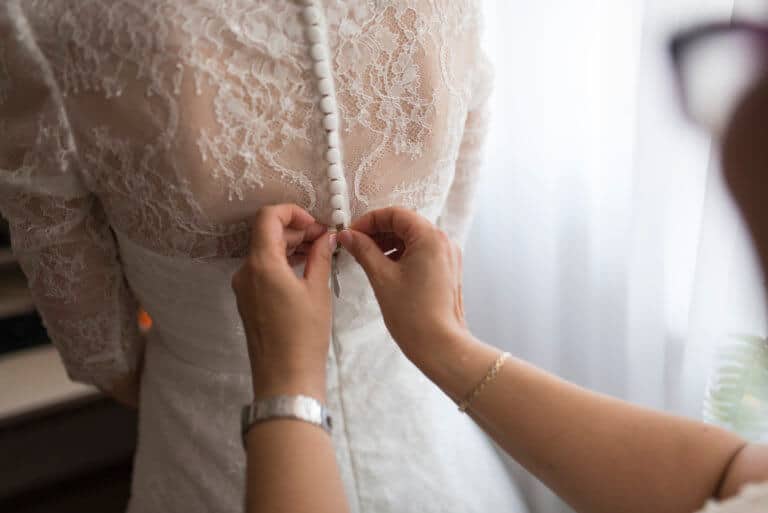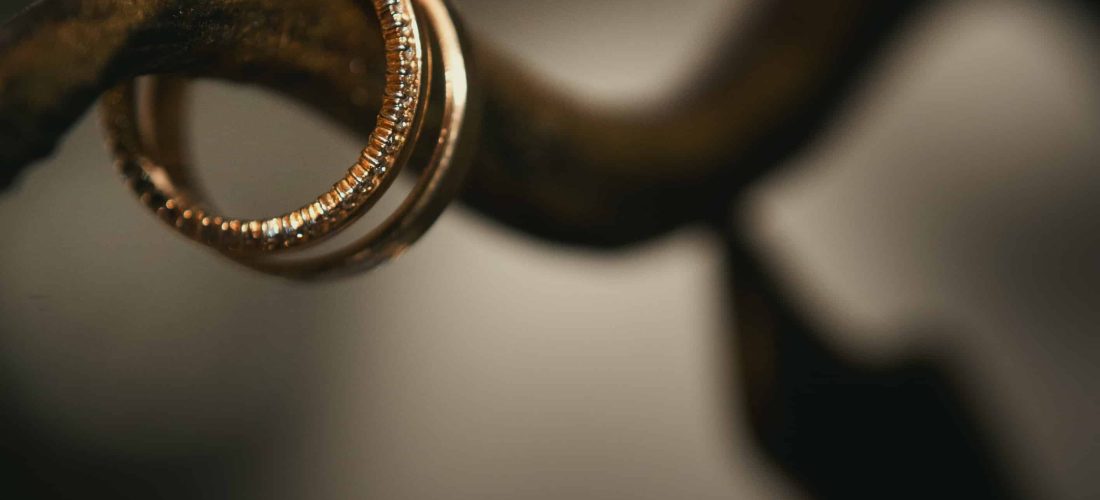Wedding traditions might be older than you can think.
Over 21,000 years ago, marriage became a possibility when people turned from hunters activated in survival mode into somehow peaceful farmers.
They could then build houses and families and divide work and duties in private arrangements instead of teaching new generations a strong community sense.
This fact facilitated gender roles to take shape, so, little by little, the wedding traditions started to appear.
The flower girls, the bouquet, the wedding cake, the garter toss: have you ever taken a second to consider the origin of all of that?
Since we are wedding-aholics, we’ve felt free to ferret around for eight intriguing facts about the popular wedding traditions we’ve seen so often in movies, series, social media, and at the weddings that we’re invited to.
Hope you enjoy what we’ve found.

The Origin of Marriage Itself
The best pieces of evidence available suggest the marriage culture started around 4,300 years ago.
As Hunter-Gatherers settled down into Agrarian Civilizations, the new form of social behaviour and organisation needed more solid arrangements.
It was there, in Mesopotamia, that the marriage culture started, as well as many other marvelous fields of study, such as cursive handwriting, mathematics, and astronomy.
Evidence also supports that married people were considered morally superior by society.
Besides that, marriage had hardly any relation with love or religion: it was a status to guarantee steadiness, inheritance, and compromise to a family name.
Origin of the honeymoon
Nowadays, booking a trip abroad to spend a week or more next to the various wonders of the world shows how much a couple is romantic and cherishes unforgettable intimate moments.
Even though honeymoons have this mild and relaxing feel today, back then, they were some kind of an escape.
Kidnapping the bride was a common attitude, but “who would do it?” you might be wondering?
It’s simple: Exes and the brides’ own family, outraging for not having approved a union with the groom.
Thus, the honeymoon was both a celebration and a way to keep the bride safe from kidnappers.
The Origin of Bridesmaids
You’ve probably seen brides matching dresses with bridesmaids before and wondered why: haven’t you?
Some people might think it is a wedding tradition to secure the bride will stand out at the event. However, if that was the reason, wouldn’t it be smarter to make bridesmaids wear opposing colours to the bride’s dresses’?
In fact, the effect is quite the opposite! Brides don’t stand out in situations like that, and this is exactly the reason behind the tradition.
Bridesmaids originally wore similar dresses to the bride to confuse evil spirits that would come up to curse the bride. By dressing alike, the bridesmaids managed to confuse these evil spirits so they wouldn’t know who to attack – and then would go away.
In the early Roman times, bridesmaids would actually line up and form an attempt of a shield while escorting the bride to the groom’s place.

The Origin of the White Wedding Dress
White is associated with purity in most western cultures, which makes it also represents naivety and virginity.
However, there is a fact few are aware of: before the mid-1800s, it was a common custom for brides to wear the red colour!
In the Japanese culture, brides wearing white is has been a tradition for more than 1000 years, but in Europe, our brides only started wearing white after Queen Victoria was married to Prince Albert in 1840.

The Origin of the Wedding Cake
A long time ago, it was common for grooms to grab a bite of bread during the wedding celebration, and crumble what was left over the brides’ heads.
As weird as it might sound, people had it as a symbol of luck.
Moreover, guests would pick up the crumbs on the floor and press them against the bride’s feet, hoping to soak up part of her luck.
This custom has gradually developed to what it is today: the most delicious part of the event, where each guest can have at least a slice of happiness manifested in the form of a cake!
Yes, I’m a wedding-cakaholic, and you’ve noticed it!
The Origin of the Bridal Bouquet
Brides were extremely scared of evil spirits, did you know? Ancient Greek brides carried herbs and spices to repel them, for instance.
It was believed these herbs carried magical powers within and that these powers would keep evil energies and spiritual beings away.
The Origin of the garter toss
Tossing the bouquet backward is a strong wedding tradition still followed in most cultures all over Europe, despite its recent loss of popularity.
After I tell you what a bouquet was used for, you’ll realize that its function is completely lost in modern culture – thankfully.
You might not believe it, but…
For some cultures in the past, doing the deed sky-open wasn’t as embarrassing as it may sound nowadays.
Engaged couples would actually do it after they consummated their union by saying their vows. Some couples, from richer families, were taken to a bed-chamber so they would have more… Intimacy.
Therefore, we can say that the bouquet toss was utilized to distract the guests and help the couple have a bit of privacy – if we can use this word.

Origin of the ring finger
Let’s close it with the loveliest wedding tradition?
Back in ancient times, it was believed the ring finger had a vein connected straight to the heart. And, by wearing a ring given as a gift, the couple would connect their hearts to each others’ so their love would last forever.
Such a vein doesn’t even exist; anatomy has proved it.
Yet, I don’t really care about that. The ring finger is still my favorite wedding tradition, and I’d love it to last forever – as the couples’ love from ancient times.
And then, which one is yours?

